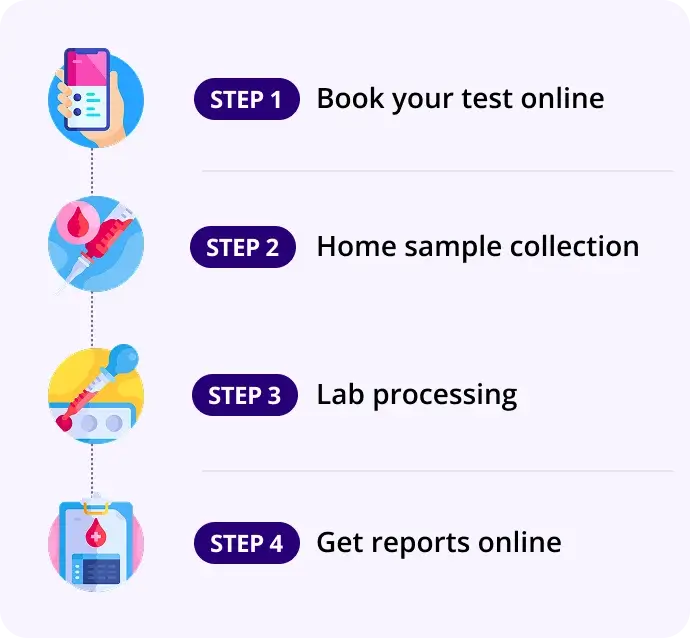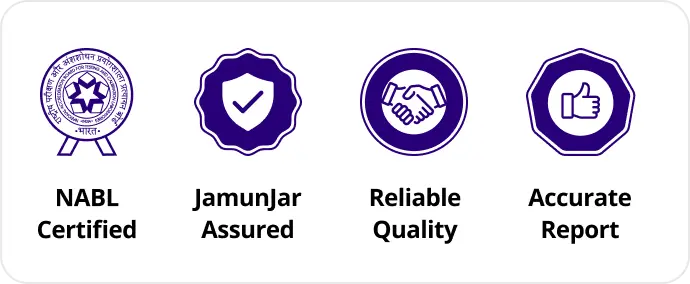Gamma Glutamyl Transferase (GGT)
Report in 16Hrs
At Home
Fasting Required
Details
Gamma-glutamyl transferase; sensitive marker of bile duct obstruction and alcohol use.
₹99₹242
59% OFF
🧪 What is GGT (Gamma-Glutamyl Transferase)?
Gamma-Glutamyl Transferase (GGT) is an enzyme found in high concentrations in the liver, bile ducts, and kidneys. It plays a role in the metabolism of glutathione and the transfer of amino acids across cellular membranes.
GGT is a sensitive marker for liver dysfunction, particularly involving the biliary tract or alcohol-related liver disease.
❓ Why is the GGT Test Done?
To:
- Detect bile duct obstructions or cholestasis
- Evaluate alcoholic liver disease
- Differentiate between liver and bone sources of elevated alkaline phosphatase (ALP)
- Monitor hepatotoxicity due to drugs or toxins
- Assist in the assessment of fatty liver, cirrhosis, or liver metastasis
📊 Normal Range
Group | Normal Range (U/L) |
|---|---|
Men | 10 – 50 U/L |
Women | 7 – 32 U/L |
Children | Higher in infancy and childhood (age-specific ranges apply) |
🔍 Reference ranges may vary slightly depending on the laboratory and method used.
📈 Interpretation of Results
GGT Level | Interpretation |
|---|---|
Normal | Likely no active liver or biliary disease |
Mild Elevation (up to 2× normal) | Fatty liver, early liver disease, or moderate alcohol use |
Moderate Elevation (2–5× normal) | Alcoholic liver disease, drug-induced hepatotoxicity |
High Elevation (>5× normal) | Biliary obstruction, liver metastasis, cholangitis, hepatitis |
🚩 GGT + ALP Together:
- If both are elevated → likely hepatobiliary source
- If only ALP is elevated, GGT helps determine if it’s liver vs bone origin
🧠 Associated Organs and Conditions
Organ | Conditions |
|---|---|
Liver | Alcoholic liver disease, fatty liver, hepatitis, cirrhosis, metastasis |
Bile Ducts | Biliary obstruction, cholestasis, cholangitis |
Pancreas | Pancreatic tumors compressing bile duct |
Kidneys | Minor expression; not typically a focus of GGT testing |
🔄 Related / Follow-Up Tests
- Liver Function Tests (LFTs) – ALT, AST, ALP, bilirubin
- Alkaline Phosphatase (ALP) – GGT helps specify the origin
- Ultrasound abdomen / MRCP – To visualize bile ducts
- Serum ethanol level – If alcohol use suspected
- Gamma-globulin levels / autoimmune markers – If autoimmune liver disease suspected
✅ Fasting Required?
Parameter | Requirement |
|---|---|
GGT | ✅ Yes – Fasting for 8–12 hours is preferred to avoid post-meal fluctuations and false elevations |
🚫 Avoid alcohol, smoking, and certain medications (e.g., phenytoin, barbiturates) for at least 24 hours prior, if possible.
📝 Summary Table
Parameter | Summary |
|---|---|
What | Enzyme test for liver and biliary tract health |
Why Test | Detects liver damage, bile duct disease, alcohol abuse, or drug-induced liver injury |
Normal Range | Men: 10–50 U/L, Women: 7–32 U/L |
Elevated Levels | Suggest liver dysfunction, especially alcohol use, biliary blockage, or drug toxicity |
Follow-up Tests | LFTs, ALP, imaging (USG, MRCP), autoimmune/liver markers |
Fasting Required | ✅ Yes – 8–12 hours fasting recommended |
How our test process works!

